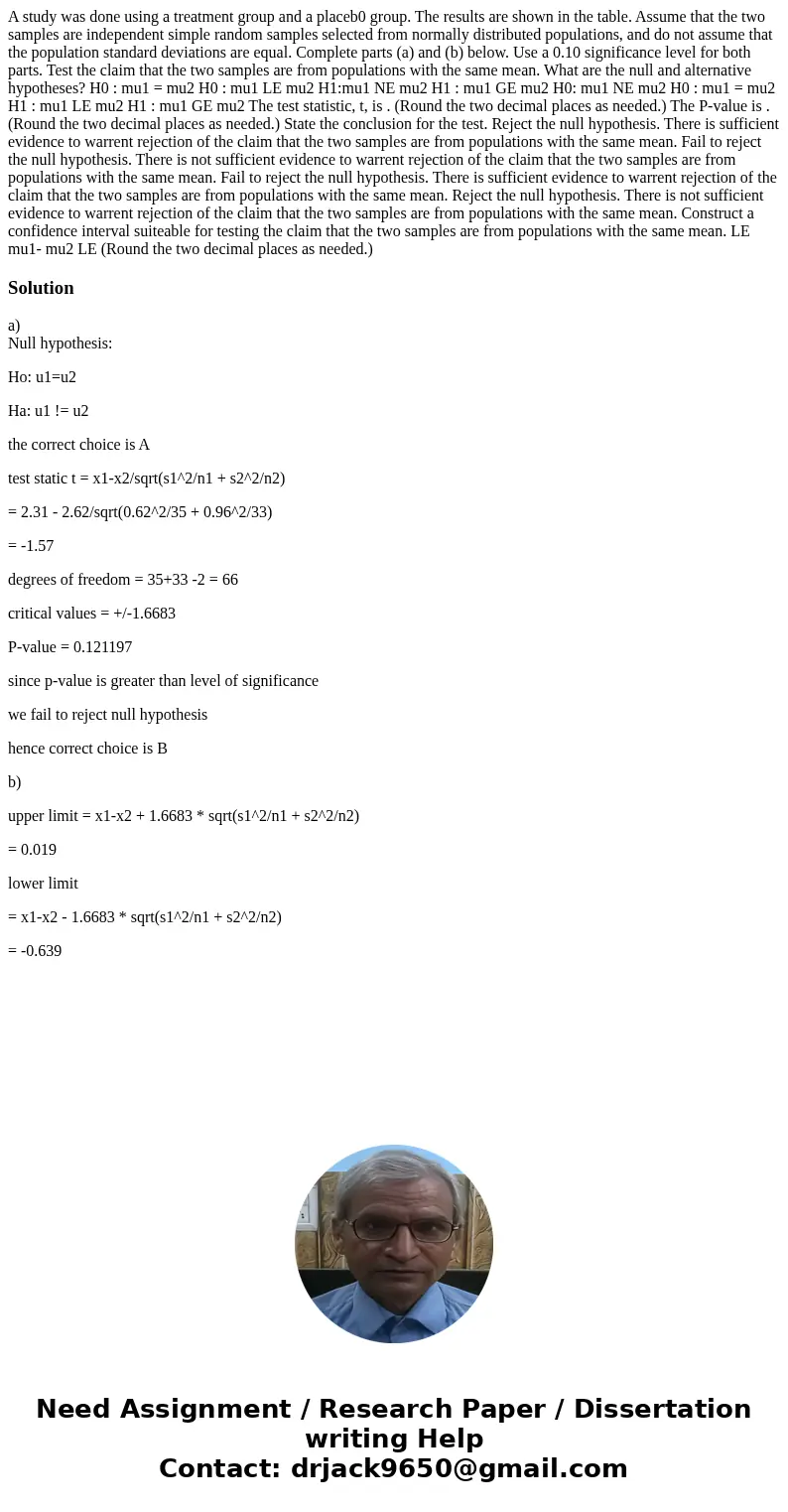A study was done using a treatment group and a placeb0 group
A study was done using a treatment group and a placeb0 group. The results are shown in the table. Assume that the two samples are independent simple random samples selected from normally distributed populations, and do not assume that the population standard deviations are equal. Complete parts (a) and (b) below. Use a 0.10 significance level for both parts. Test the claim that the two samples are from populations with the same mean. What are the null and alternative hypotheses? H0 : mu1 = mu2 H0 : mu1 LE mu2 H1:mu1 NE mu2 H1 : mu1 GE mu2 H0: mu1 NE mu2 H0 : mu1 = mu2 H1 : mu1 LE mu2 H1 : mu1 GE mu2 The test statistic, t, is . (Round the two decimal places as needed.) The P-value is .(Round the two decimal places as needed.) State the conclusion for the test. Reject the null hypothesis. There is sufficient evidence to warrent rejection of the claim that the two samples are from populations with the same mean. Fail to reject the null hypothesis. There is not sufficient evidence to warrent rejection of the claim that the two samples are from populations with the same mean. Fail to reject the null hypothesis. There is sufficient evidence to warrent rejection of the claim that the two samples are from populations with the same mean. Reject the null hypothesis. There is not sufficient evidence to warrent rejection of the claim that the two samples are from populations with the same mean. Construct a confidence interval suiteable for testing the claim that the two samples are from populations with the same mean. LE mu1- mu2 LE (Round the two decimal places as needed.)
Solution
a)
Null hypothesis:
Ho: u1=u2
Ha: u1 != u2
the correct choice is A
test static t = x1-x2/sqrt(s1^2/n1 + s2^2/n2)
= 2.31 - 2.62/sqrt(0.62^2/35 + 0.96^2/33)
= -1.57
degrees of freedom = 35+33 -2 = 66
critical values = +/-1.6683
P-value = 0.121197
since p-value is greater than level of significance
we fail to reject null hypothesis
hence correct choice is B
b)
upper limit = x1-x2 + 1.6683 * sqrt(s1^2/n1 + s2^2/n2)
= 0.019
lower limit
= x1-x2 - 1.6683 * sqrt(s1^2/n1 + s2^2/n2)
= -0.639

 Homework Sourse
Homework Sourse